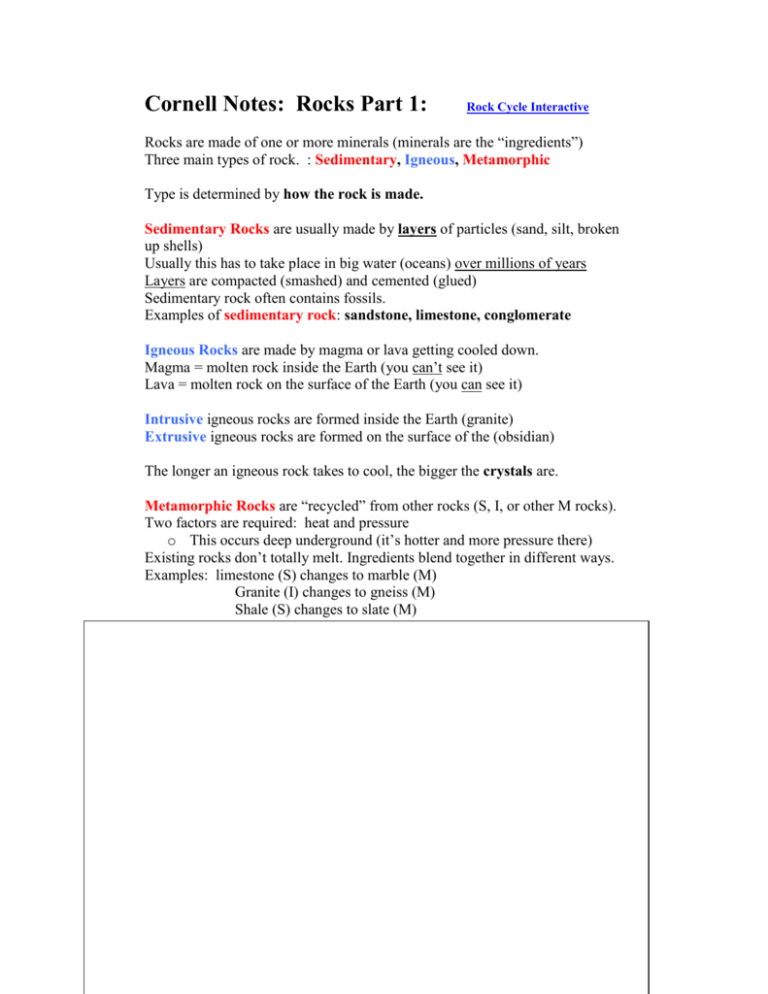Cornell Notes: The Rock Cycle
advertisement

Cornell Notes: Rocks Part 1: Rock Cycle Interactive Rocks are made of one or more minerals (minerals are the “ingredients”) Three main types of rock. : Sedimentary, Igneous, Metamorphic Type is determined by how the rock is made. Sedimentary Rocks are usually made by layers of particles (sand, silt, broken up shells) Usually this has to take place in big water (oceans) over millions of years Layers are compacted (smashed) and cemented (glued) Sedimentary rock often contains fossils. Examples of sedimentary rock: sandstone, limestone, conglomerate Igneous Rocks are made by magma or lava getting cooled down. Magma = molten rock inside the Earth (you can’t see it) Lava = molten rock on the surface of the Earth (you can see it) Intrusive igneous rocks are formed inside the Earth (granite) Extrusive igneous rocks are formed on the surface of the (obsidian) The longer an igneous rock takes to cool, the bigger the crystals are. Metamorphic Rocks are “recycled” from other rocks (S, I, or other M rocks). Two factors are required: heat and pressure o This occurs deep underground (it’s hotter and more pressure there) Existing rocks don’t totally melt. Ingredients blend together in different ways. Examples: limestone (S) changes to marble (M) Granite (I) changes to gneiss (M) Shale (S) changes to slate (M)







